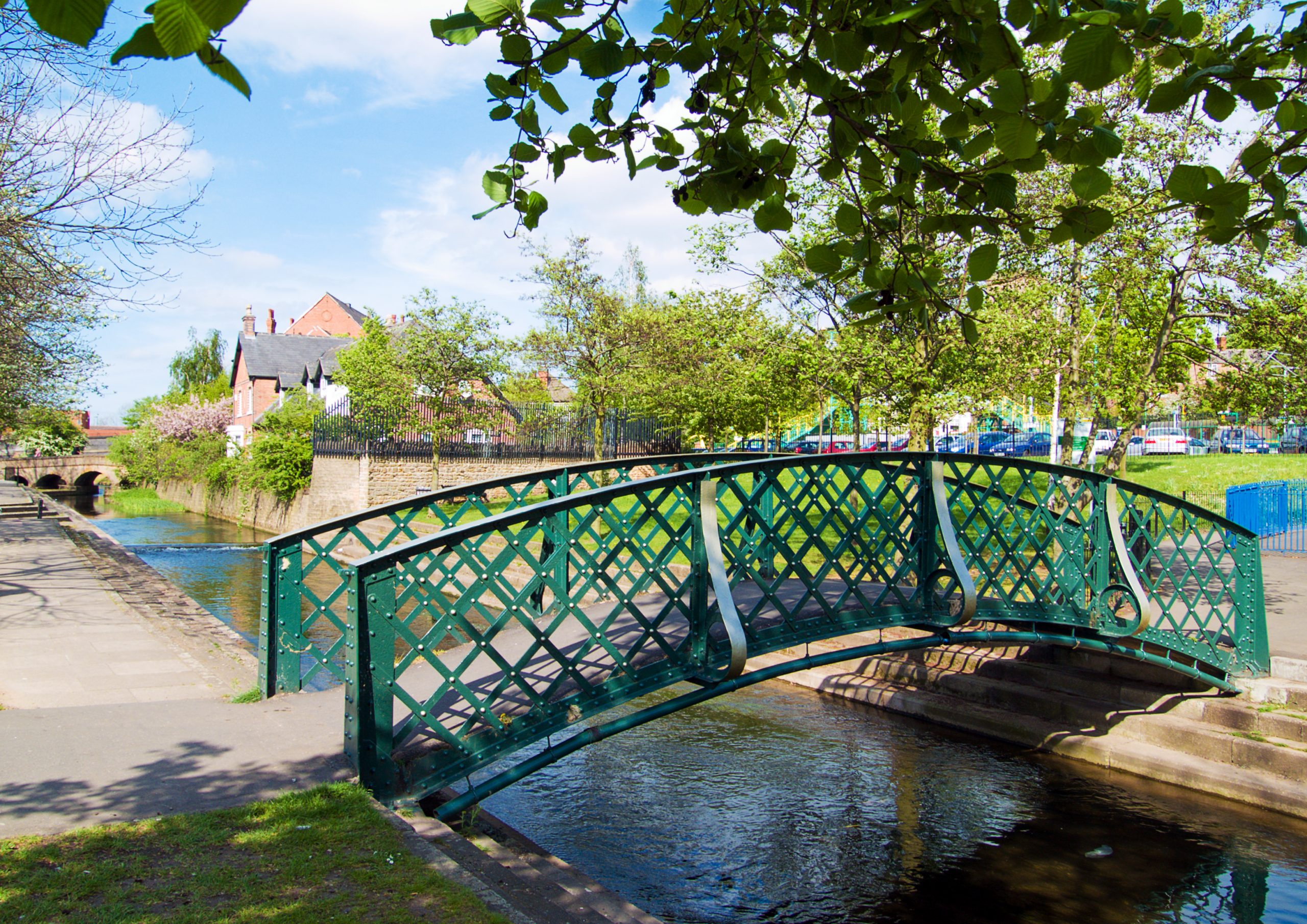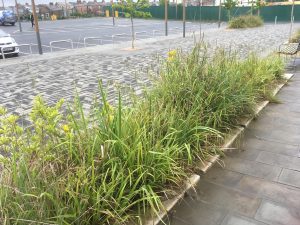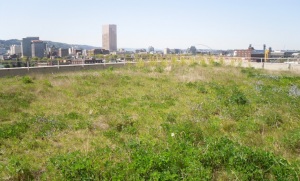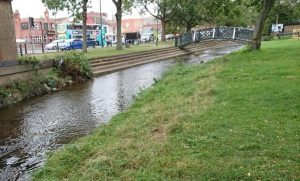
March 8, 2021, by sustainablenottingham
The Blue-Green approach to urban water management
Today is International Women’s Day so we are taking the opportunity to highlight some of the work of UoN women who are leading the way to a more sustainable future. IWD is a global day celebrating the social, economic, cultural and political achievements of women.

Emily O’Donnell is a Research Fellow in Urban Flood Resilience in the School of Geography. Emily’s research addresses strategies needed to enable cities to achieve flood resilience and water security that are sustainable, reliable and enduring. Here, Emily outlines her work on the role blue-green infrastructure can play as part of transformative change in urban flood risk and water management.
The way we manage water in cities is changing in response to more frequent and extreme rainfall events and increasing urbanisation. Flooding and water pollution are increasingly common in cities all around the world and new approaches to reduce these risks are being developed. Instead of relying on traditional ‘grey’ infrastructure (flood walls, underground piped drainage systems) that aim to remove water from the surface as quickly as possible, management strategies are now looking to work with water and manage it on the surface. Rainwater is becoming increasingly valued as a vital resource.
Blue-Green Infrastructure

A swale in Newcastle, UK. Swales are shallow vegetated channels designed to store and/or transport rainwater and remove pollutants (credit: Emily O’Donnell)
Blue-Green infrastructure includes swales, rain gardens, trees, green roofs, ponds, wetlands and restored river channels. They help reduce flood risk by storing water, slowing down water flow and allowing more natural processes such as infiltration. Blue-Green infrastructure can also help:
- improve biodiversity
- reduce air pollution
- lower temperatures
- sequester carbon,
- create attractive places, and
- improve health and wellbeing by offering recreational opportunities and spaces to relax in a busy city.
Blue-Green Cities
At the largest scale, a Blue-Green City aims to recreate a more natural water cycle in an urban environment by bringing together green infrastructure and water management. Natural drainage channels are restored, water quality is improved, and greenspace is brought back into urban neighbourhoods. What is key is that Blue-Green Cities are developed with residents and communities to ensure that infrastructure is understood and valued by those living with and benefitting from it.

A green roof in Portland, Oregon USA. Portland is acknowledged as a leading city in using green infrastructure to manage stormwater (credit: Emily O’Donnell).
Exploring Blue-Green infrastructure in the River Leen catchment
The ability of Blue-Green infrastructure to provide many benefits makes it ideal for positive place making and driving economic growth, whilst helping cities become more resilient to the impacts of climate change. In the River Leen project (funded by the University of Nottingham’s Interdisciplinary Research Cluster (IRC) Initiative and associated with the Water Works IRC), we are exploring the potential for Blue-Green infrastructure to manage flood risk, improve the local environment and increase development potential.
The River Leen rises just outside of Kirkby-in-Ashfield and follows the route of the Leen Valley in the City of Nottingham until it joins the River Trent. It is 24 km long and drains a large proportion of Nottingham City’s urban area. The Leen is a fast responding catchment and vulnerable to flooding from intense rainfall events. The urban environment has encroached on the River and in many locations it is hidden from view and its potential is not realised. However, in others, such as Bulwell town centre, residents interact with the River and it is a valued part of the community.

The River Leen between Mill Street Recreation Ground and David Lane Tram Stop (credit: Hazel Wilson).

The River Leen running through Bulwell town centre, and accessible via the steps (credit: Hazel Wilson).
Developing a Leen catchment strategy
Preliminary findings from interviews with professionals responsible for flood risk management along the Leen have highlighted the passion for improving the river and its green corridor, and increasing access. The Leen, like many urban rivers, is somewhat forgotten unless people have a use for it. The complexities of the Leen catchment mean that a suite of interventions are needed to manage flood risk and enable development in the brownfield sites located alongside the River. This could include:
- holding back water upstream through Natural Flood Management processes (e.g. leaky dams)
- managing flood risk on new development sites through sustainable drainage systems
- retrofitting Blue-Green infrastructure into urban areas that drain into the Leen (slowing down the flow of water), and
- potentially looking at flood resilient buildings in new developments.
A catchment strategy is of paramount importance to ensure a joined up approach amongst the range of stakeholder organisations and to create a sustainable vision for long-term river management.

Really enjoyed this – great to see a local example.